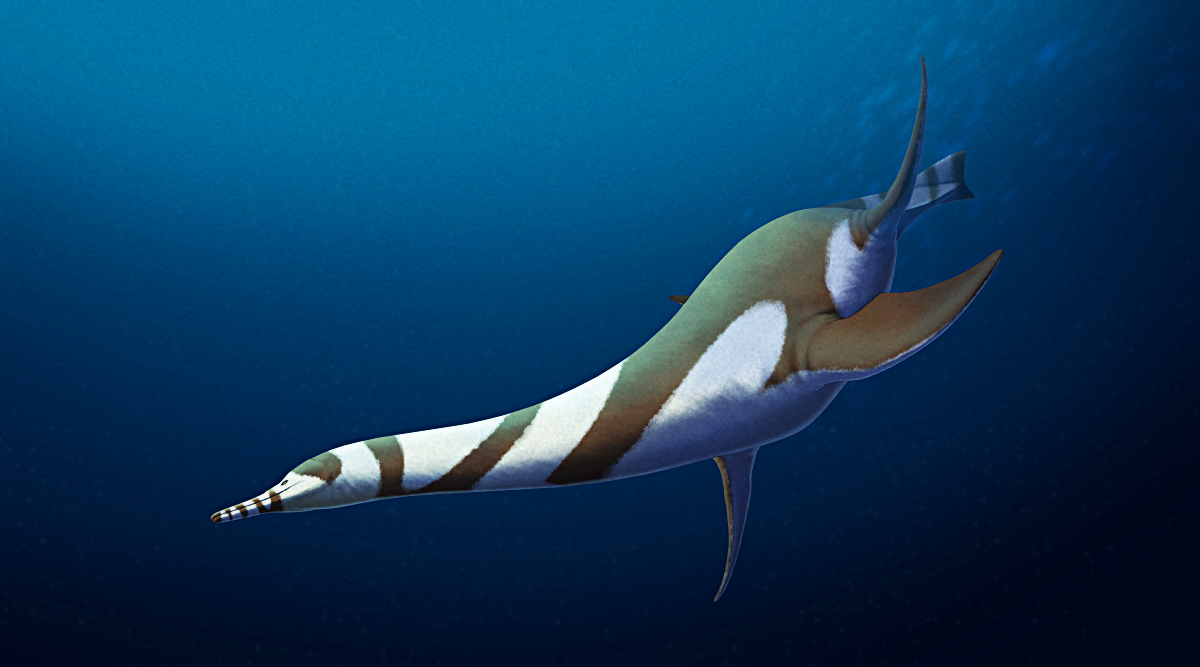While the most iconic types of plesiosaur were long-necked with small heads and short blunt snouts, some of these marine reptiles actually developed the opposite sort of arrangement, with groups like the polycotylids and the pliosaurs independently evolving short necks, larger heads, and long snouts.
…Except some of them didn’t keep it quite that simple.
Serpentisuchops pfisterae here lived during the late Cretaceous, about 70 million years ago, in the ancient Western Interior Seaway covering what is now Wyoming, USA. This 7m long (~23′) plesiosaur was a member of the polycotylid lineage, but along with a long slender snout it also had an unusually long neck.
Some earlier polycotylids like Thililua had fairly long necks, too, but all of Serpentisuchops’ closest relatives were short-necked species, so it seems to have actually re-evolved this condition rather than inheriting it from its ancestors. Since no other marine reptiles in its habitat had this particular body plan, it was probably occupying a very specific ecological niche – the presence of attachment points for powerful neck muscles suggest it was able to swing its head sideways to snap its jaws at prey at high speed, with its longer neck giving it more reach than other polycotylids.

